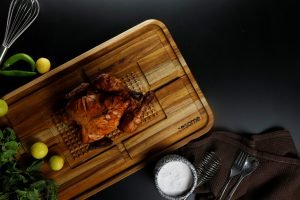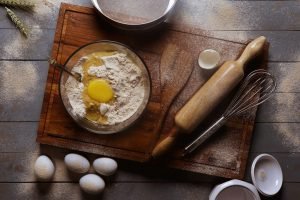
How to clean and care for your wooden boards
[vc_row][vc_column][vc_column_text] First things first, should

When looking at cutting boards, there are many questions to ask:
But the biggest question of all is, do you want a wooden board or a plastic board?
There are now many studies that compare the healthiness of wood vs plastic, and as you can guess, wood wins. That one was almost a no-brainer. Now that you’re clear on buying a wooden board, you go and search a good wooden board online. But, wait, you’re again struck with many confusing pieces of information, such as:
Before you just buy the most expensive one assuming that high price means high quality, read this article to know better. The pricy one might be great, but it may not be right for you. Find out why.
There are broadly two types of wooden cutting boards:
To buy the perfect one for your use, explore both of them in this article – what makes them different, what are the pros and cons of each of them – and then you can decide which one is right – for you.
When you imagine a wooden cutting board, the first image that comes to your mind is one of the edge grain boards – they are the most common ones. Why are they called edge grain boards? Edge grain boards are made by fusing long strips of wood together. The long strips of wood can be either just one kind of wood or a combination of different types pieced together. The strips are arranged side-by-side and glued together. As a result, the cutting surface of this type of board consists of only the edge of each strip of wood – hence the name. But this isn’t enough information to make sure if these boards are right for you. You can find out by knowing their pros and cons:
PROS:
CONS:
Hey, if you cook occasionally and don’t really care about dull knives and pretty cooking, edge grain boards are certainly the more economical choice. But, what if the knife is your best friend? Then you might want to read further.
This is the type of board is the one you might encounter with a butcher – the boards that make chopping look as alluring as art. How are they different from edge grain boards? While a combination of long strips of wood is glued together in the edge grain boards, the end grain wooden boards are made from the pith parts of wood, commonly known as the end grain – thus the name. I know you’re not a lumberjack, so let me give you the easiest way to identify end grain boards (besides checking the description, duh): They are the chopping boards with the checkerboard pattern. They are made of wooden blocks with grains in various directions. They are a lot thicker than the edge grain boards. The short blocks of hardwood are glued together side by side. But why are they even there? Edge grain boards should suffice. Well, they have certain advantages over the edge grain boards.
PROS:
But it’s not all Candy land either.
CONS:
Now you know it all. You can now easily decide which type of wooden chopping board is best suited for you, checking off items in the pros you definitely and the cons you’re okay to live with.

[vc_row][vc_column][vc_column_text] First things first, should

[vc_row][vc_column][vc_column_text]Have you ever seen a

When looking at cutting boards,

[vc_row][vc_column][vc_column_text]“Ugh. Another marketing gimmick about

